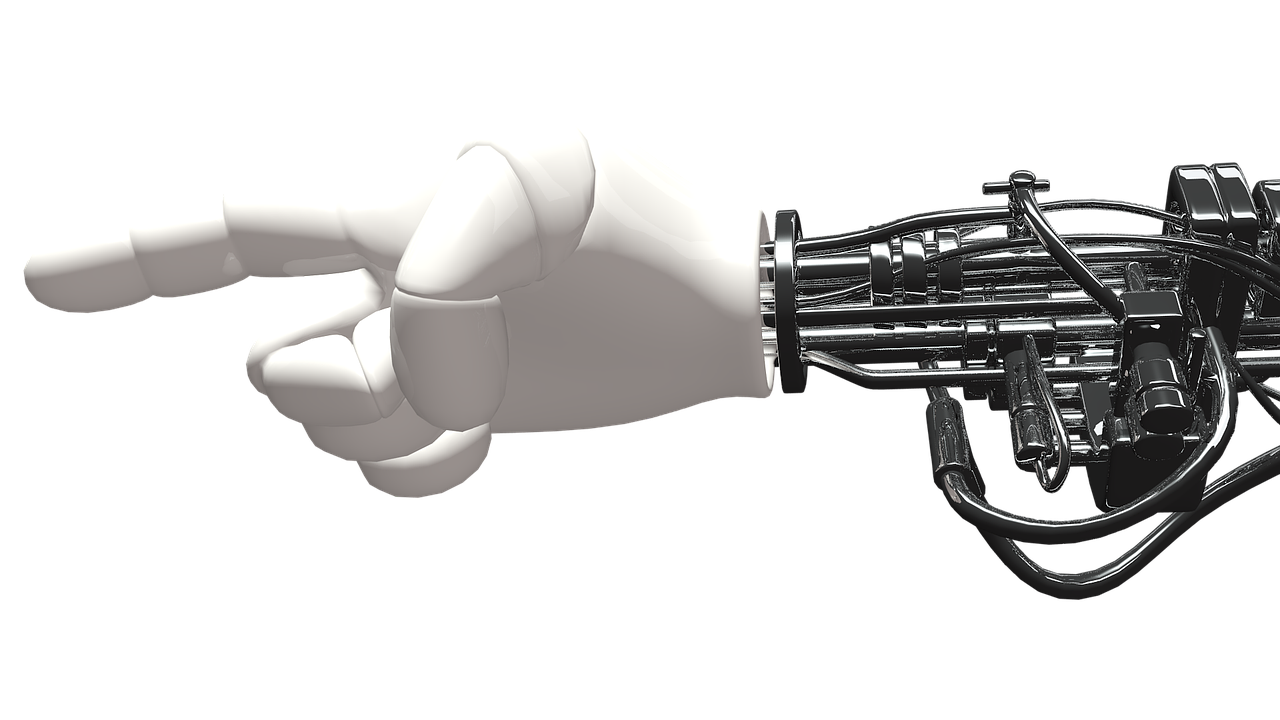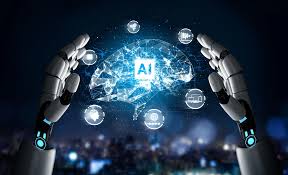
Computer vision, a branch of artificial intelligence, empowers machines to analyze and understand visual content such as images and videos. It underpins functions like object detection, image segmentation, and optical character recognition (OCR). This technology finds applications across numerous domains, including self-driving cars for path planning, medical diagnostics, in-store analytics, and security systems for monitoring and access regulation.
Read more about the Best Tourist Spots
Read more about AI for Natural Language Processing
Key AI-Driven Computer Vision Capabilities
- Object Identification and Categorization
Detects and labels items within visual inputs, for example, identifying consumer goods or classifying photo content. - Object Localization
Determines where particular elements or objects are situated in visual data, essential for robotics and autonomous technologies. - Image Partitioning
Breaks down visuals into multiple segments or regions, enabling a fine-grained understanding of object shapes and contours. - Text Extraction (OCR)
Retrieves and deciphers text embedded in images or video footage, such as scanning vehicle license plates or equipment numbers. - Facial Authentication
Matches human faces to known profiles for identity verification or recognition. - Motion Tracking
Follows the movement of objects or key features through video frames, useful in areas like surveillance, sports analytics, and vehicle navigation.
Industry Sectors Leveraging Computer Vision
- Self-Driving Technology
Equips vehicles to interpret surroundings, detect obstacles, and recognize road signs for autonomous operation. - Medical Sector
Assists in analyzing diagnostic imagery, identifying abnormalities, monitoring diseases, and supporting surgical precision. - Retail & Online Shopping
Facilitates visual product searches, tailored suggestions, and in-store behavior tracking to enhance merchandising strategies. - Surveillance & Security
Bolsters safety by detecting individuals across databases, managing secure access, and overseeing physical spaces. - Industrial Manufacturing
Streamlines defect detection, oversees machinery status, and enhances workplace safety on factory floors. - Farming and Agriculture
Monitors plant vitality, manages inputs, and helps optimize overall farm performance. - Media Content Organization
Automatically labels and sorts visual media like images and video files to simplify content handling. - Augmented Reality Experiences
Enables digital overlays in real-world settings by interpreting the surrounding visual environment. - Human perception extends beyond the mere function of our eyes; it encompasses our capacity to understand abstract concepts and the unique insights we’ve gained through ongoing interaction with our environment. Historically, machines were unable to think independently. However, with recent developments, computer vision has emerged—a field that simulates human visual processing, enabling systems to detect and interpret visual information similarly to how people do.
- Computer vision has seen rapid advancement, fueled by breakthroughs in artificial intelligence and improved computational capabilities. Its role in everyday applications is growing steadily, with projections suggesting the industry could reach a valuation of $41.11 billion by 2030, increasing at a compound annual growth rate (CAGR) of 16.0% between 2020 and 2030.
What Is Computer Vision?
Computer vision is a field within artificial intelligence that trains machines to analyze and interpret visual information. By utilizing digital imagery from sources like cameras and video feeds, along with sophisticated deep learning techniques, computers are able to identify, classify, and respond to elements in their visual surroundings with remarkable accuracy.
Key Elements of Computer Vision
- Image Recognition: One of the most prevalent uses, this allows systems to pinpoint a particular object, individual, or activity within an image.
- Object Detection: This goes a step further by identifying several objects within a single image and marking their positions using bounding boxes. It’s critical in technologies like autonomous vehicles, where recognizing all nearby elements is essential.
- Image Segmentation: This divides an image into distinct regions to enhance analysis or representation, making the image more interpretable. It’s especially valuable in fields like medical diagnostics.
- Facial Recognition: A focused application of image analysis, this enables systems to detect or authenticate individuals based on facial features in images or video.
- Motion Analysis: This technique tracks moving elements in video sequences, widely applied in areas like surveillance, security, and sports performance monitoring.
- Machine Vision: This merges visual interpretation with robotics, enabling machines to evaluate visual inputs and direct mechanical actions—commonly used in automated manufacturing processes.
How Does Computer Vision Operate?
Computer vision empowers systems to decode visual content from images and videos to execute actions or make informed decisions. The process starts with collecting visual input through devices like cameras. This input is then processed to enhance clarity—steps may include denoising, normalization, or converting to grayscale.
Next, the system extracts key features such as lines, patterns, or specific structures from the visual data. With these features identified, the system performs tasks like recognizing objects or segmenting the image into logical sections.
Powerful models—particularly Convolutional Neural Networks (CNNs)—are commonly used to perform classification and recognition tasks with high precision. Once analysis is complete, the processed data is used to drive decisions or initiate specific actions. These capabilities power a broad range of real-world applications, from smart vehicles and video surveillance to factory automation and healthcare diagnostics.
Human vision extends beyond just the function of our eyes; it reflects our ability to understand abstract ideas and draw from personal experiences accumulated through ongoing interaction with our surroundings. In the past, computers lacked the capability to think independently. However, with recent progress, computer vision has emerged—a technology that simulates human sight, allowing machines to perceive and interpret information similarly to humans.
Significant strides in computer vision have been made, driven by breakthroughs in artificial intelligence and enhanced computational power. This technology is becoming increasingly embedded in daily life, with estimates suggesting the market will approach $41.11 billion by 2030, growing at a compound annual growth rate (CAGR) of 16.0% from 2020 to 2030.
Become an AI & Machine Learning Expert
- $267 billion: Anticipated global AI market value by 2027
- 37.3%: Estimated CAGR of the global AI market (2023–2030)
- $15.7 trillion: Projected contribution of AI to the global economy by 2030
Artificial Intelligence Engineer
Earn an industry-accredited AI Engineer Master’s certificate from Simplilearn
Live interactive classes led by industry professionals
Duration: 11 Months
View Program
iHUB Divyasampark, IIT Roorkee
Professional Certificate Program in Generative AI & Machine Learning
Duration: 11 Months
View Program
What Learners Are Saying:
Indrakala Nigam Beniwal
Technical Consultant, Land Transport Authority (LTA), Singapore
I successfully completed the Artificial Intelligence Engineer Master’s Program with Simplilearn. I’m grateful to the instructors and team who curated such an excellent learning journey.
Bhramara Potabattuni
Engineer, Accenture
I joined Simplilearn’s AI/ML course during my final semester to build a solid base. It boosted my understanding of AI/ML and helped me get ready for my new position as an Associate Software Engineer at Accenture.
What Is Computer Vision?
Computer vision is a branch of AI that enables machines to interpret and make sense of visual data. Using digital images from cameras and videos, and applying advanced deep learning models, computers can identify, categorize, and respond to visual information with a high level of precision.
Key Components of Computer Vision
- Image Recognition: Identifying specific entities such as people, objects, or actions in an image.
- Object Detection: Spotting several objects in an image and locating them using bounding boxes—especially important in autonomous driving.
- Image Segmentation: Dividing an image into sections for easier analysis, widely used in areas like healthcare imaging.
- Facial Recognition: A specific application where the system confirms or identifies people from images or video frames.
- Motion Analysis: Tracking how objects move through a video, commonly used in surveillance and sports.
- Machine Vision: The combination of computer vision and robotics for visual input analysis and mechanical response, such as in manufacturing.
How Computer Vision Functions
Computer vision allows machines to interpret and analyze images and video in order to make informed decisions or execute particular actions. The process typically includes:
- Capturing visual input via cameras and videos.
- Preprocessing, including tasks like grayscale conversion, noise filtering, and contrast adjustments to improve visual clarity.
- Feature Extraction, where critical image elements like edges and textures are identified.
- Object Detection or Image Segmentation is then carried out to isolate or classify specific elements.
Advanced models, particularly Convolutional Neural Networks (CNNs), are heavily used to boost accuracy in image classification. Once processed, the system can act based on its analysis—whether in driving, diagnostics, automation, or security.
Image Analysis Through Computer Vision
Image analysis entails retrieving valuable data from visuals using computational tools and is essential in fields like healthcare, transportation, defense, and media. Here’s an outline of the process:
1. Image Preprocessing
Images are enhanced before analysis:
- Grayscale Conversion: Simplifies processing by removing color data.
- Noise Filtering: Smooths images to eliminate irrelevant pixels.
- Normalization: Brings pixel values to a standard scale.
- Edge Detection: Highlights boundaries and shapes for easier recognition.
2. Feature Extraction
This step focuses on capturing distinct patterns such as contours, textures, and shapes that are vital for identifying objects accurately.
3. Segmentation
Segmenting an image breaks it into parts for easier interpretation:
- Thresholding: Uses pixel values to separate regions.
- Region-Based Segmentation: Divides areas based on defined properties.
- Edge-Based Segmentation: Uses detected edges to segment parts.
- Clustering: Groups similar pixels into cohesive clusters.
4. Object Identification and Classification
Recognizing and naming items in an image can involve:
- Template Matching: Comparing areas of the image to a predefined model.
- Machine Learning: Employing trained models on labeled datasets to classify items.
- Deep Learning (CNNs): Automating recognition with high precision by learning directly from raw image data.



